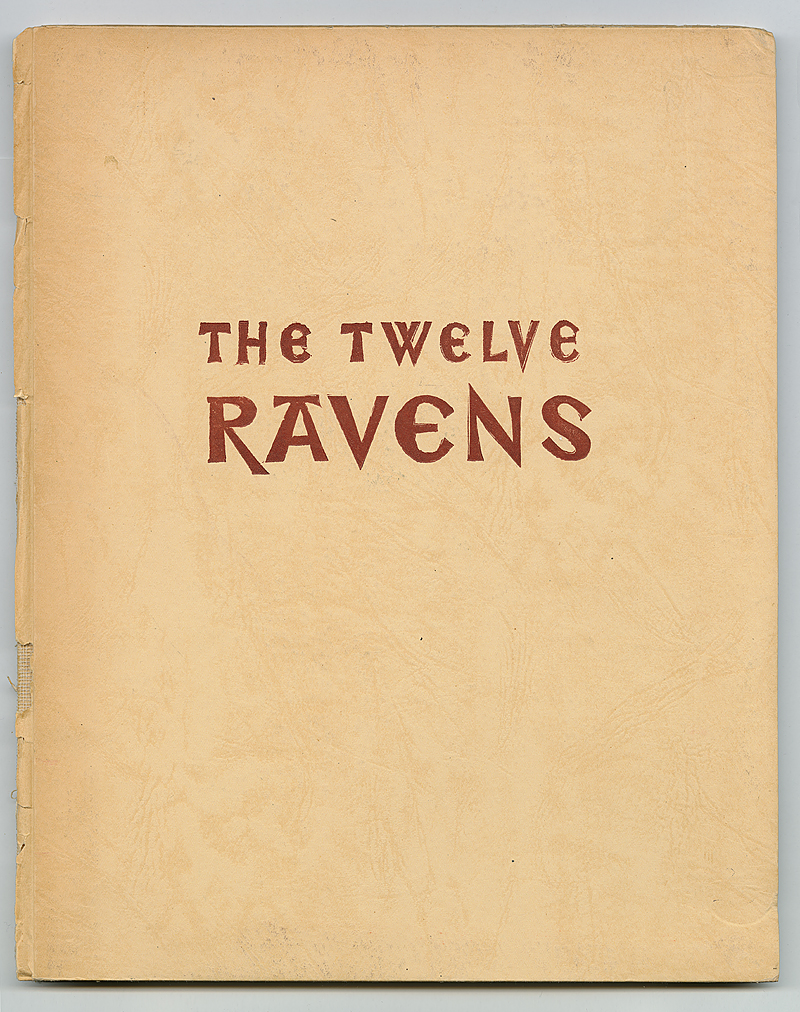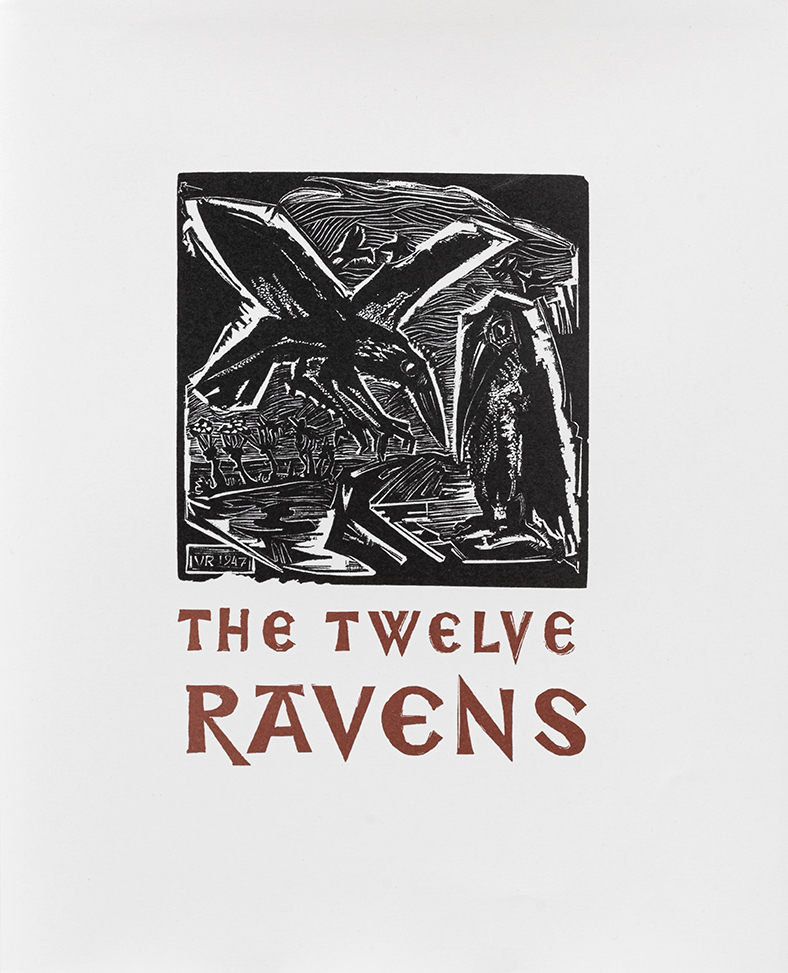'The Twelve Ravens' by Vaclovas Ratas
Exhibition 'Vaclovas Ratas. Beyond the Equator' is complemented by a facsimile edition, illustrated with original woodcuts.

The Twelve Ravens, a Lithuanian folk tale about twelve brothers turned ravens illustrated by the iconic Lithuanian graphic artist Vaclovas Ratas (1910–1973) is the 27th volume in the series of books Lithuania, Country and Nation and was released in 1949 in Munich. Between 1948 and 1949 the series of publications served as a way for the Lithuanian diaspora to present its cultural heritage to the Western world in English. Agencies in the USA, England and Canada funded the publication of the series and took care of the distribution.
V. Ratas had already become known as a book artist before taking up the idea. A talented pupil of the Kaunas School of Art and an active participant of the pre-war Lithuanian art scene, he had also been awarded the Honorary Diploma at the 1937 International Exposition of Art and Technology in Paris for his illustrations of Jūratė and Kastytis, a ballad by Maironis. After fleeing wartime Lithuania, V. Ratas became the editor of the Lithuanian newspaper Žiburiai in Augsburg in 1946. In the same year, the newspaper’s publishing house produced and published the album 40 Wood-Cuts in English, French and Lithuanian. It showcased four of the most prominent active Lithuanian artists in exile, which included V. Ratas-Rataiskis alongside Paulius Augius-Augustinavičius, Viktoras Petravičius and Telesforas Valius.
The illustrated fairy tale The Twelve Ravens was conceived and published as a bibliographic publication with manually composed text and original woodcut illustrations. 560 numbered and signed copies were published. The artist asked the writer Paulius Jurkus to prepare the text of the fairy tale for publication in English and the translation was edited by Mary J. Kinney.

V. Ratas created an attractive and cohesive ensemble comprising a dust jacket, cover, title page and nine woodcut illustrations (one of them was also used on the dust jacket). The artist’s small-format compositions stand out due to their visual dynamism, abstract, laconic, even somewhat rough picture and expressive cutting style. The visual make-up of the illustrations in The Twelve Ravens harmoniously combines an interpretation of folk traditions of graphic art and the stylistic features of modern German expressionism. V. Ratas conveyed the drama of the fairy tale in a compelling manner through highly contrasting dark and light areas. The austere visuals of the publication reflected the experiences of the artist’s generation, which had only recently faced the aggression of war.

In 1949, amidst the turmoil of post-war developments, V. Ratas and his family found themselves in Australia. After moving from Perth to Sydney in 1954, the artist became actively involved the country’s cultural life. He was one of the founders of Sydney Printmakers Society and a member of the Australian Contemporary Art Society, participated in the activities of both these societies as well as numerous exhibitions, and also wrote articles on the issues of art. V. Ratas’s creative experience, shaped by the values of the Lithuanian school of graphic art, enriched by European traditions and bolstered by achievements attesting to his potential (such as The Twelve Ravens, illustrated by himself – a clear proof of his ability), helped the artist integrate successfully and earn recognition in Australia.
The Twelve Ravens, a folk tale illustrated by Vaclovas Ratas representing the best European traditions of original artist’s books, was published under difficult post-war conditions in a foreign country. It remains significant and relevant to this day as both a publication of high artistic value and an important achievement in Lithuanian book design.
Ilona Mažeikienė, Regina Urbonienė












